Editorial
Plus 1000 — Mathematical lives
To celebrate the tenth anniversary year of Plus, we've been running a series on our favourite maths in history. In the March issue this year we covered the best maths of the last decade, in the June issue some of the best maths of the last century, and now we've asked people to nominate what they think are the most ground-breaking mathematical developments of the last millennium.
A history of maths of the last 1000 years would of course fill volumes, so we were faced with an impossible task. But while sifting through the countless candidate theories, we noticed that the human stories behind them are often just as fascinating as the maths itself. Deceit, intrigue, tragedy and triumph — it's all there. So this time, we've picked out five favourites with the human angle in mind and hope we're forgiven for leaving the maths for another time.
- Galois and the development of group theory;
- Newton, Leibniz and the development of calculus;
- Female struggle — Sophie Germain, Emmie Noether, Ada Lovelace and Sofia Kovalevskaya;
- The Bernoulli regime;
- Understanding the heavens — Copernicus, Galileo and Kepler.
Galois and the development of group theory
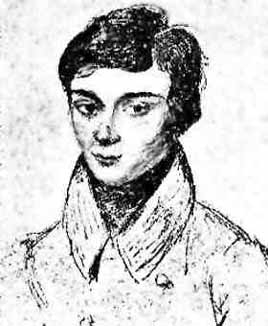
Evariste Galois
Evariste Galois (1811-1832) died in a duel at the tender age of 21, after having single-handedly laid down the foundations of group theory. Born into the turbulent political atmosphere of post-Napoleonic France, his personality was a potent mix of mathematical genius and passion. Galois was a fervent republican, rebelliously outspoken and eager to fight with bloodier weapons than mere intellectual argument. His political activism led not only to his expulsion from the École Normale, where he was studying to be a teacher, but also to several stints in prison. During one of these, he tried to commit suicide with a dagger.
Galois's mathematical genius was recognised early on, but so was his weakness at communicating his ideas to others. His literature examiner at the École Normale even believed him "to have but little intelligence". Nevertheless, Galois corresponded with some of the best mathematicians of his day and published several papers. His work on group theory, the mathematical tool for studying symmetry, grew out of his study of algebraic equations. The roots (solutions) of polynomial equations exhibit a certain symmetry and, to pin this down, Galois came up with the concept of a group. Unfortunately, though, he confused his colleagues by initially using the concept without having defined it, so the importance of his work was not immediately recognised. Galois wrote down the first explicit definition of a group in 1832.
On the 30th of May of the same year, Galois fought a duel with someone by the name of Perscheux d'Herbinville. There are various theories about why he was challenged: that he was lured into it by a state secret agent, that it was a duel called between fellow republicans, or that it was to settle a love dispute between Galois and a sometime friend. The night before the fateful morning, Galois sat down to write up some of his mathematical work. In the margin there is a note reading:
This note gave rise to the legend that group theory was born during the feverish last hours of Galois's life.
You can find out more about Galois and about group theory in the following Plus articles:
- Genius, stupidity and genius again;
- The power of groups;
- An enormous theorem;
- Through the looking glass.
Newton, Leibniz and the development of calculus

Isaac Newton
Central to the invention of calculus is a story of arrogance and jealousy. Both men involved were great mathematicians, and one of them was nothing less than a giant of science. They were Isaac Newton (the giant, 1643-1727) and Gottfried Wilhelm von Leibniz (who was of course also a genius, 1646-1716).
Both men worked on calculus in the second half of the seventeenth century. Pulling together various bits and pieces, and adding their own ingenious contributions, both succeeded in bringing structure into the jumble of ideas that had been calculus up to that time. Newton developed his method of fluxions, as he called it, a few years before Leibniz developed his theory, but Leibniz's work was published first. Leibniz had not been aware of Newton's work, and had approached the subject in a completely different way, but this didn't stop Newton from accusing Leibniz of theft.
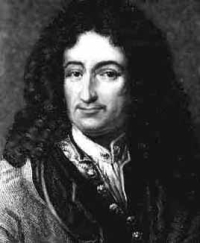
Gottfried von Leibniz
Corresponding mostly via third persons, learned journals and pamphlets, Leibniz continued to protest his innocence and Newton continued to vent his wrath. Newton indignantly claimed that "not a single previously unsolved problem was solved" in Leibniz's work. Leibniz called a Newton supporter an idiot. A Royal Society commission was set up to arbitrate, but was completely biased towards Newton and unsurprisingly found in his favour. The author of the commission's final report was none other than — Newton himself!
The controversy over the true inventor of calculus was never resolved in the men's lifetime and overshadowed the end of both their lives. For Newton this was not the first instance of quibbling, as he reportedly took criticism very badly indeed. Genius doesn't necessarily come with grace!
Find out more about calculus on Plus:
There is more on Newton on the Newton project, and the Gresham College website features a transcript of a lecture on Newton by Robin Wilson. This site also features a video of the lecture.
Female struggle
Although women have started to feature more prominently in mathematics over the last 100 years, few female names appear in earlier times. This, of course, is largely due to the prevailing attitude that intensive study might damage the fragile female mind, or, more bluntly, that women are stupid. But some women have managed to make a name for themselves against the odds, and we'll mention four of them here.
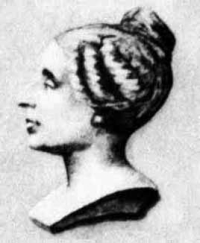
Sophie Germain
Sophie Germain (1776-1831) conducted her studies of Newton and Euler at an early age, at night, in her freezingly cold bedroom. Her parents had taken away her fire to prevent her from studying. Although she could not enter university, she managed to get hold of lecture notes from the École Normale in Paris. One of the lecturers there was Joseph-Louis Lagrange, to whom she sent an impressively original paper under the male pseudonym M. LeBlanc. Luckily, Lagrange wasn't put off when he finally discovered her true identity, and helped secure her entry to the mathematical world.
Germain worked with some of the greatest mathematicians of her time. She collaborated with Adrien-Marie Legendre, and conducted a long correspondence with Johann Friedrich Gauss. To Gauss, Germain remained Monsieur LeBlanc until his hometown was occupied by the French in 1806. Germain's fears for his safety led her to contact the French commander, who blew her cover. Upon learning her true identity, Gauss respected her work even more.
Germain's work with Legendre and Gauss was on number theory, and she made important contributions to Fermat's last theorem, the one that was to remain unsolved for another 200 years. But her brilliance didn't earn her the respect she deserved. She was never able to study formally at a university and many members of the academic world — including Siméon Poisson — simply decided to ignore her. Her death certificate described her not as a mathematician, but as a property owner.
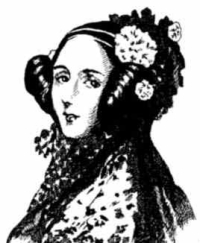
Ada Lovelace
Ada Lovelace (1815-1852) was born into more fortunate circumstances than Germain, at least mathematically-speaking. Her father was the "mad, bad, and dangerous to know" Lord Byron, the famous English poet. Byron left Ada and her mother Anabelle Milbanke shortly after Ada's birth. Milbanke had a passion for mathematics which led her ex-husband to once call her "the Princess of Parallelograms". She ensured that her daughter had an excellent education in all subjects, and particularly in mathematics.
At the age of 17 Ada met Charles Babbage, and the meeting shaped her mathematical career. Babbage's interest in calculating machines led him to conceive the analytical engine: a machine that would be able to store data and perform sequences of instructions defined on punch cards and fed into the machine, like the Jacquard looms of the time. This would mean that the analytical engine could be programmed to perform any type of calculation and be a direct forerunner of the computers we use today.
Lovelace was fascinated by Babbage's ideas and began to correspond with him. Although she soon became an expert on his engines, she held back from publishing her own work, instead offering to translate an Italian scientist's report on one of Babbage's lectures. When Babbage, aware of her knowledge, asked "why she had not herself written an original paper on a subject with which she was so intimately acquainted", Lovelace modestly replied that the thought had not occurred to her.
Babbage and Lovelace agreed she should add her own notes to the translation and this addition ended up being three times the length of the original work. Her translation and extended notes (published in 1843) became the most important work describing the analytical engine and how it could be used. Most famously, the notes contained the first published computer program — instructions on how to calculate the Bernoulli numbers.
Not only was Lovelace a pioneer of programming, but she saw beyond Babbage's vision for calculation to other potential uses for the analytical engine. She saw that the instructions and data need not represent numbers and numerical operations, but could also represent letters, images or music — a vision of modern computers and software over a century before they came into existence.
Unfortunately, the analytical engine was never constructed because artisans of the time lacked the expertise to make the necessary complicated mechanical parts. Lovelace's health deteriorated following the publication of the notes. Many have felt that this was in part because she lacked a new mathematical project, although she herself felt that other publications would follow. Her friendship with Babbage continued and they tried at one point to calculate a surefire way to win at the horse races. But sadly, Lovelace died of cancer in 1852, aged just 36.

Sofia Kovalevskaya
When Sofia Kovalevskaya (1850-1891) was 11 years old the walls of her room were for some reason papered with lecture notes on differential and integral calculus. These walls came to nurture an interest in maths that she had held from an early age and she soon embarked on a more formal study with her tutor. Her father eventually tried to put a stop to this, causing her to take her passion underground and secretly peruse algebra books in bed at night.
Her unusual abilities soon attracted the attention of others, however, and after several years her father finally permitted her to take her studies further. But not without a huge sacrifice: since higher education involved moving abroad and women were not supposed to live alone in those days, she was forced to enter a loveless marriage that was to cause her an immense amount of grief in the future.
Eventually Kovalevskaya managed to travel to Heidelberg in Germany, where she met the eminent mathematician Karl Weierstrass and proved her remarkable abilities with several papers on a range of subject including the rings of Saturn. The most impressive of her papers dealt with differential equations. In 1874 she received a glowing doctorate from the University of Göttingen. But despite her successes and the fervent support of Weierstrass, her gender prevented her from obtaining an academic position. The best job offer she received was teaching arithmetic at elementary school, causing her to remark that, unfortunately, she was very weak at multiplication tables. Embittered, she withdrew from maths for a period of six years.
It was the tragic suicide of Kovalevskaya's husband that jolted her back into action in 1883. She finally managed to obtain a position at the University of Stockholm and her career began to thrive. She became the third female professor at a European university, took an active part in academic life and gained recognition from society. In 1886 she won the Prix Bordin of the French Academy of Sciences. Her entry on rigid bodies was so good that the prize money was raised from 3,000 to 5,000 Francs. More prizes and honours followed. Unfortunately, Kovalevskaya died of pneumonia in 1891 at the height of her career and at only 41 years of age.
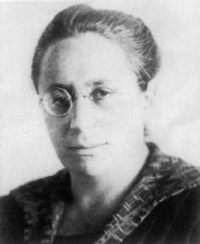
Emmy Noether
In Emmy Noether's (1882-1935) time opportunities for women had become slightly more favourable. Universities in Germany allowed women to sit in on lectures as long as the professor gave his consent. Noether's father was an eminent professor of mathematics at Erlangen; she was asking permission to attend lectures from family friends and they agreed. In 1904 a relaxation in the rules forbidding women to be awarded degrees meant that Noether was allowed to matriculate at Erlangen. She went on to complete a virtuoso doctorate in 1907. With typical earthy frankness she later went on to describe her thesis as "crap". Women were not allowed to fill academic posts, so Noether spent the next eight years working for the university without pay or position and helping her increasingly frail father with his teaching responsibilities.
During a stay in Göttingen in 1903, Noether had met mathematical giants including David Hilbert and Felix Klein. After her doctorate Hilbert and Klein persuaded Noether to come to Göttingen and then embarked on a long campaign to have her appointed to a faculty position in spite of the Prussian law passed in 1908 which prohibited this. Noether was refused a university position but permitted a compromise — she could lecture but only if the lecture was listed under Hilbert's name rather than her own.
Albert Einstein wrote to Felix Klein in 1918, "On receiving the new work from Fräulein Noether, I again find it a great injustice that she cannot lecture officially". Finally, in 1919, Noether was granted the lowest faculty rank of Privatdozent and, although still unpaid, began teaching that autumn.
In 1922 Noether was appointed to the position of "unofficial, extraordinary professor", in effect, a volunteer professor without pay or official status, and she was later granted a tiny salary which was barely at subsistence level. Noether published what is generally known as her most important paper, Theory of ideals in rings, in 1921 which was of fundamental importance in the development of modern algebra. From a physicist's perspective her most important accomplishment came to be known as "Noether's Theorem", which proves a relationship between symmetries in physics and conservation principles.
German mathematics, like much else, became highly politicised in the 1930s. Noether was one of the first six professors fired from Göttingen by the Nazis because she was both Jewish and politically liberal. Noether eventually found temporary positions at universities in the USA. Sadly, Noether died in exile of ovarian cancer. She was in her early fifties at the height of her creativity and powers.
Find out more about Ada Lovelace and Emmy Noether in the Plus articles Ada Lovelace — visions of today and Against the odds. Find out more about female mathematicians on the Biographies of women in mathematics website and MacTutor index of female mathematicians.
The Bernoulli regime
To get to grips with the Bernoulli family, we first have to list their mathematical protagonists:
- The brothers Jacob I (1654-1705) and Johann I (1667-1748);
- Their nephew Nicolaus I (1687-1759);
- Johann's sons Nicolaus II (1695-1726), Daniel (1700-1782) and Johann II (1710-1790);
- And Johann II's sons Johann III (1744-1807) and Jacob II (1759-1789).
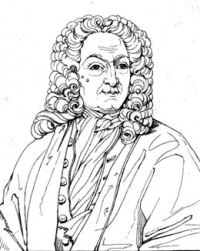
Johann Bernoulli I
The Bernoullis produced an astounding eight mathematicians over three generations. The sheer number of them, and the family habit of using the same first names, required the numbering system you see above to keep track of them all. And given the family's mathematical success, you would think that each generation was actively encouraged to study the subject. But instead the mathematical members of the family often had to study mathematics and astronomy against the wishes of their parents. Indeed there were enough quarrels, backstabbing and even untimely deaths among the Bernoullis to script a soap opera.
Jacob (I) Bernoulli was the first member of the family to study maths, and taught his brother Johann (I) who had been forced to study medicine. The brothers worked on similar topics, such as calculus (Jacob was the first mathematician to use the term integral) and studying families of curves such as the catenary, the curve of a suspended string. However, in what would prove to be typical behaviour in the family, the brothers soon went from collaborators to rivals, publicly criticising each other's intellect and competing to solve the same mathematical problems.

Daniel Bernoulli
Jacob and Johann taught their nephew, Nicolaus I, mathematics, and Nicolaus assisted his uncle, Jacob, in publishing his works. Nicolaus is known for posing the probability problem known as the St Petersburg paradox, which describes a gambling game that no-one would reasonably play, despite a possibly infinite prize.
Nicolaus's cousin Daniel (son of Johann) provided an explanation of the St Petersburg paradox. Daniel, probably the most famous mathematician of the family, did his most important work on fluid dynamics, and came up with what is known as the Bernoulli principle. However, continuing the family's bitter history, Daniel had a difficult relationship with his father Johann, who did not want him as a mathematical competitor. Johann tried to stop Daniel from studying mathematics, and even attempted to plagiarise Daniel's greatest work, Hydrodynamica.
Johann I's other two sons were also mathematicians. His favourite, Nicolaus II, worked on the problem of trajectories, and the mathematical arguments behind Newton and Leibniz's dispute over who had invented calculus. Johann II worked in mathematical physics.
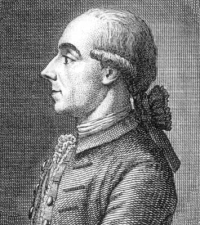
Johann Bernoulli III
Johann II also had two mathematical sons. Johann III was a child prodigy, and was just 19 years old when he was appointed to the Berlin Academy. He produced work in astronomy and probability, but his accounts of his travels in Germany had a greater impact historically. Jacob II worked on mathematical physics at the St Petersburg Academy of Sciences, and married Euler's granddaughter. Sadly he drowned in the Neva River when he was only 29 years old.
The Bernoulli family, despite its infighting and bitterness, dominated mathematics in the 17th and 18th centuries. Together with their contemporaries Newton, Leibniz, Euler and Lagrange, they laid many of the foundations of mathematics and physics that we still use today.
"There is no philosophy which is not founded upon knowledge of the phenomena, but to get any profit from this knowledge it is absolutely necessary to be a mathematician." - Daniel Bernoulli
You can find out more about the Bernoulli family on the MacTutor history of maths biographies index, and about the St Petersburg paradox and the Bernoulli principle on Plus:
- The gentlemen from Basle and the Petersburg Paradox;
- Daniel Bernoulli and the making of the fluid equation;
- Understanding turbulence;
- Testing Bernoulli: a simple experiment.
Understanding the heavens — Copernicus, Galileo and Kepler
One of the most important mathematical achievements of all time has to be our understanding of the celestial bodies and their motion. Perhaps surprisingly, given how revolutionary these ideas were, our three heroes all managed to die of natural causes — but they were treading on dangerous ground.

Nicolaus Copernicus
Nicolaus Copernicus (1473-1543) was the first person to propose a model of the Universe with a motionless Sun near its centre and the Earth revolving around it. So revolutionary was this new idea, that even today we speak of a Copernican shift when deeply-held beliefs are suddenly overturned. Copernicus developed an interest in astronomy, which was then intimately linked to astrology, early on in life. His occupation as Canon of Frauenburg (now Frombork) Cathedral afforded him enough time and money to pursue this interest and to constantly observe the night skies. In 1514, he circulated a handwritten treatise called Little Commentary, which first set out the main ideas of his new world view. He left all the mathematical and physical detail for his major work, called De revolutionibus orbium coelestium, the printed version of which, the story has it, he only saw on his deathbed.
The fact that Copernicus got away with his blasphemous theory is due to a large extent to a fraudulent act of the type setter who worked on De Revolutionibus: Andreas Osiander decided not to set Copernicus's original preface, but inserted instead a letter written by himself. This letter stated that the contents of the book were not meant to represent reality, but simply to give a new and elegant way of calculating the movements of the celestial bodies. The real implications of Copernicus's model could be conveniently ignored and he died of a natural death at the age of 70.

Galileo Galilei
Osiander's cheat also helped to save Galileo Galileo (1564-1642) from a worse fate. Galileo believed in the Copernican system and also held that the bible should be interpreted to take account of new scientific evidence rather than the other way around. In 1613 the Inquisition took a dangerous interest in him. Luckily, important church figures at the time took a relatively liberal attitude to Copernicanism, as long as it was interpreted as a mathematical theory, rather than as a reality. They left him alone, at least for the moment.
Galileo made a range of spectacular astronomical observations, many of which served to strengthen his belief in Copernicus's theory. In 1616 the Inquisition had rendered Copernican views illegal, but Galileo's friendship with Pope Urban VIII caused him to let down his guard and publish his ideas freely. But when he published the Dialogue concerning the two chief systems of the world — Ptolemaic and Copernican the church had enough. There was a trial and Galileo was sentenced to life imprisonment in 1633. It wasn't all that bad though: his good connections with the church meant that he was spared jail and merely placed under a life-long house arrest.
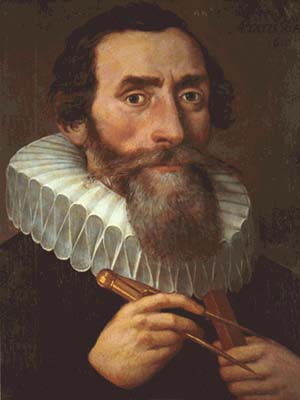
Johannes Kepler
Johannes Kepler (1571-1630) played an important role in establishing the Copernican theory. His astronomic tables were the most exact of his time and provided strong evidence for a heliocentric system. Although he was interested in many subjects, Kepler is best-known for his three laws describing the motion of the planets around a stationary sun.
Kepler was a deeply religious man. As Plato before him, he believed that mathematics lay at the heart of god's creation and could lead you straight to his (god was male of course) truth. Kepler was not, however, a tame follower of the doctrine of the day. His outspokenness, both in scientific and religious matters, eventually got him excommunicated in 1612 — a bitter experience for such a religious person.
Excommunication wasn't the only blow in Kepler's life. In 1611 Kepler's son and wife died in quick succession, and soon after he was expelled from Prague because he was a protestant. A great aunt of Kepler's had been burnt at the stake as a witch, and his mother narrowly escaped a similar fate. She was tried for witchcraft in Kepler's native Württemberg around 1616. Kepler rushed to her defence and hired several lawyers. Luckily, despite their torturing and witch hunting, the authorities did not neglect their bureaucracy, and Kepler's mother was freed in 1620 on account of a legal technicality.
Inbetween his stargazing, Kepler did occasionally consider earthly matters. During the celebrations for his second wedding, his attention was captured by wine barrels. Wondering how one would go about calculating their volume — an important question at any party — he conducted a study into volumes of revolution. His method involved breaking things up into indivisibles, and is one of the fore-runners of infinitesimal calculus.
You can read more about Copernicus, Galileo and Kepler in the Plus articles 101 uses of a quadratic equation: Part II and The origins of proof III: Kepler's proofs. There is more interesting information on the Galileo Project website.